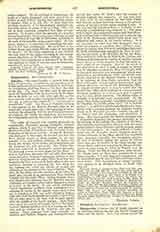

Complin.—The term Complin is derived from the Latin completorium, complement, and has been given to this particular Hour because Complin is, as it were, the completion of all the Hours of the day: the close of the day. The word was first used in this sense about the beginning of the sixth century by St. Benedict in his Rule (cc. xvi, xvii, xviii, and xlii), and he even uses the verb complere to signify Complin: “Omnes ergo in unum positi compleant”; “et exeuntes a completorio” (xlii). The Hour of Complin, such as it now appears in the Roman Breviary, may be divided into several parts, viz.: the beginning or introduction, the psalmody, with its usual accompaniment of anthems, the hymn, the capitulum, the response, the evangelical canticle, the prayer, and the benediction.
The origin of Complin has recently given rise to considerable discussion among liturgists. General opinion, which is also that of Baumer and Batiffol, ascribes the origin of this Hour to St. Benedict, in the beginning of the sixth century. It was St. Benedict who first gave it this name; he decided also that this Hour should consist of three psalms (iv, xc, and cxxxiii) to be said without anthems, the hymn, the lesson, the versicle Kyrie eleison, the benediction, and the dismissal (ch. xvii and xviii). But Father Pargoire and, later still, A. Vandepitte oppose this opinion and seek a more ancient origin for this Hour. A text in Callinicus (between 447 and 450), first introduced in Father Pargoire’s argument, informs us that between Vespers and the night Office there was celebrated in the East a canonical Hour called in this text prothupnia, because it preceded the first sleep, being nothing but what the Greeks of today call apodeipnon, on account of the meal it follows. However, in the thirty-seventh question of his rules, St. Basil, also, speaks of an intermediate Hour between Vespers and the night Office. Father Pargoire therefore disputes the assertion that St. Benedict was the originator of Complin, being rather disposed to trace its source to St. Basil. In the article mentioned Father Vandepitte confirms these conclusions; nevertheless he states, in the clearest terms, that it was not in Caesarea in 375, but in his retreat in Pontus, (358-362) that Basil established Complin, which Hour did not exist prior to his time, that is, until shortly after the middle of the fourth century. Dom Plaine also traced the source of Complin back to the fourth century, finding mention of it in a passage in Eusebius and in another in St. Ambrose, and also in Cassian. These passages have been critically examined, and Fathers Pargoire and Vandepitte have proved that before St. Basil’s time the custom of reciting Complin was unknown. At any rate, even if these texts do not express all that Dom Plaine says they do, at least they bear witness to the private custom of saying a prayer before retiring to rest. If this was not the canonical Hour of Complin, it was certainly a preliminary step towards it. The same writers reject the opinion of Ladeuze and Dom Besse, both of whom believe that Complin had a place in the Rule of St. Pachomius, which would mean that it originated still earlier in the fourth century. It is not necessary to enter into this discussion, but it might be possible to conciliate these different sentiments by stating that, if it be an established fact that St. Basil instituted and organized the Hour of Complin for the East, as St. Benedict did for the West, there existed as early as the days of St. Cyprian and Clement of Alexandria the custom of reciting a prayer before sleep, in which practice we find the most remote origin of our Complin. But let the result of this discussion be what it may, it cannot be denied that St. Benedict invested the Hour of Complin with its liturgical character and arrangement, which were preserved in the Benedictine Order and almost completely adopted by the Roman Church; it is hardly to be believed, as Dom Plaine maintains, that the Hour of Complin, at least such as it now exists in the Roman Breviary, antedated the Benedictine Office. In default of other proof, it may be noted that the Benedictine Office gives evidence of a less advanced liturgical condition, as we have seen that it consists of a few very simple elements. The Roman Office of Complin is richer and more complicated. To the simple Benedictine psalmody—modified, however, by the insertion of a fourth psalm (xxx), “In to Domine speravi “—it adds the solemn introduction of a benediction with a reading [perhaps the spiritual reading which, in St. Benedict, precedes Complin (ch. xlii of the Rule)], and the confession and absolution of faults. But what endows the Roman Complin with a distinctive character and greater solemnity is, to say nothing of the ending, the addition of the beautiful response, In manus tuas, Domine, with the evangelical canticle Nunc Dimittis and its anthem, which is very characteristic. It is really difficult to understand why St. Benedict, whose liturgical taste favored solemnity in the Office, should have sacrificed these elements, especially the evangelical canticle. By way of liturgical variety the service of initium noctis may also be studied in the Celtic Liturgy (see Celtic Rite), such as it is read in the Bangor Antiphonary, its plan being set forth by Warren and by Bishop. Under the title of Apodeipnon (after meals), the Greeks have an Hour that corresponds to our Latin Complin; it is very long and complicated, and its description may be seen in Father Petrides’ article, cited below. This Apodeipnon, or Grand Apodeipnon, appears in an abridged form, or Small Apodeipnon.
FERNAND CABROL

